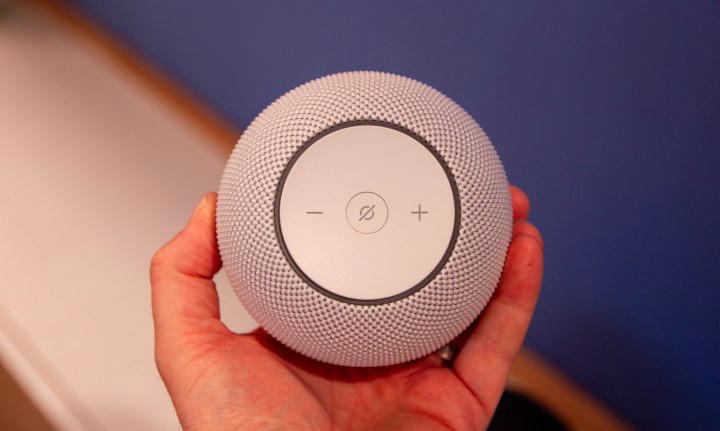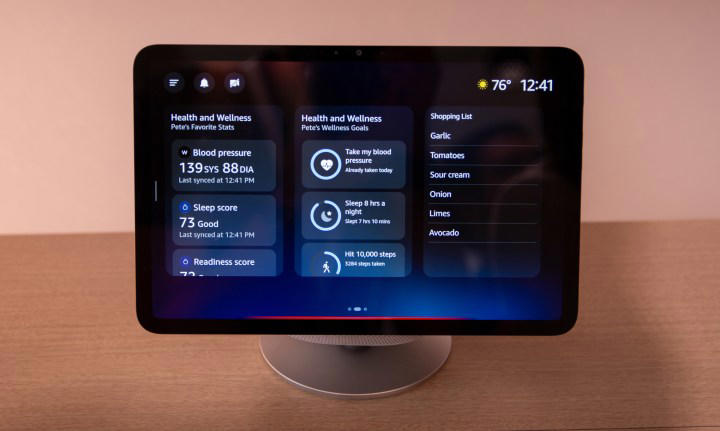I can’t wait to get Amazon’s new Echo speakers in my home – Google and Apple can’t compete

Digital Trends
53.9K Followers
Story by Chris Hall • 1d
Say what you like about the relatively slow evolution of Alexa as a voice assistant (and the slightly slower emergence of Alexa+ as a more advanced AI system), Amazon has absolutely thrashed Apple and Google in the smart home space.
I bought my first Echo the moment it became available – so revolutionary was the smart speaker that I didn’t wait for Amazon to send me a press sample, I just went out and bought it. I still have that original Echo from 2015 (when it arrived in the UK) and guess what – it still works.
The Echo devices have been a trojan horse for Alexa, getting Amazon’s assistant into homes the world over. Thanks to cheap hardware (and I don’t mean cheap in a nasty way) Alexa’s growth laid the foundation for a connected smart home experience – long before anyone had heard of Matter, Alexa joined the dots and made a connected experience affordable.
The future is about Alexa+
In February 2025, Amazon unveiled the awaited next generation of Alexa, simply called Alexa+. The premise is simple: to bring natural language support, open the door to agentic AI actions (like making reservations) and continue Alexa’s dominance in the smart home.
Alexa+ has been in beta for a couple of months in the US and currently isn’t available anywhere else. It’s promised for other regions early in 2026 and while Alexa+ comes with a price tag (whereas the original Alexa was “free”), it’s bundled into a Prime subscription, so many Amazon users will get access to it at no cost.
Key to the Alexa+ experience is offering more connected experiences, offering more flexibility and conversational interactions and all the benefits that come with being able to access a more sophisticated language model.
The new Echos are designed for Alexa+

The new Echo Dot Max (2025) sounds much better than the older Echo Dot Chris Hall / Digital Trends
At the announcement of Alexa+, new hardware was promised and Amazon has now delivered, with a quartet of devices. Key to these is the Echo Dot Max, which is likely to become the most popular of the new models.
While Alexa+ as a (mostly) cloud service should run on older hardware, the new Echo models come with more power from the AZ3 and AZ3 Pro chips, a new design, and a feeling of freshness, the ideal platform to carry Alexa+ forward.
I’ve always liked the Echo Studio for its room-filling audio and the meaty bass that it pushed, but despite this launching in 2019 as a speaker for Dolby Atmos and Hi-Res music (both of which are available on Amazon Music), I always felt the speaker wasn’t quite as immersive as I wanted it to be.
Sound from the old Echo Studio always seemed to emanate from the speaker’s location, filling the room with music through volume rather than a wide sound stage.
Having listened to the new Echo Studio (2025), I’m a lot more hopeful for its success. I found it to offer a much wider experience: in a group listening session, the music was more enveloping in the room rather than being loud from a single point – and that’s better for those wanting music at a party, because it can omnipresent without having to shout over the top of it.
There are three 1.5in drivers and 1x 3.75in woofer in the Echo Studio, leading to a substantial music delivery, but with the new spherical design, it’s now 40% smaller than the old Studio, just a little larger than the standard Echo.
I have no doubt that if you’re looking for a better-sounding speaker in your home, the Echo Studio is the one to choose, although the $219.99 price will be a barrier for some. That’s a serious price and I’d understand if people opted for an Echo Dot Max instead.
The success of Echo Studio is likely to revolve around how aggressively Amazon discounts it: while the Echo Dot has famously seen 50% discounts at times, the old Echo Studio didn’t see such aggressive reductions. It might be that Amazon has to reduce the new model by larger amounts to get it into people’s homes.
Amazon Echo Studio (2025)
$219 Amazon
Echo Show gets up updated too

The new Echo Show 8 (2025) has a fresh look and clever features Chris Hall / Digital Trends
While the Echo smart speakers have me the most excited, many will choose the Echo Show to get a visual angle on Alexa. Echo Show has been available in many guises so far, but the new Echo Show 8 and Echo Show 11 have a fresh new design that sees a mesh-covered base with a screen that appears to float.
They look smarter and more modern, while reducing the footprint slightly over previous models because the base is no longer the full width of the display. The experience is much the same as it was before: you get the full Alexa voice experience, but with added visual backup.
I was really interested in the stats that the Echo Show could display, drawn from its integration with Oura, so rather than fiddling with the app on your phone to view the details of your sleep, you can just call those up on the Echo Show.
The Echo Show is also a great way to have a screen into your home and act as a hub for controlling your devices. While that can happen through voice, being able to access tap controls is also really useful for those with a smart home or wanting to view security cameras.
Amazon Echo Show 8 (2025)
$179 Amazon
Amazon Echo Show 11 (2025)
$219 Amazon
Alexa+ will be a smart home accelerator
Alexa+ comes with another skill, which Amazon says is driving smart home use – and that’s the ability to setup Routines with a simple voice request.
Routines are what Alexa uses for more complex smart home interactions – think of it as an “if this then that” approach, where a trigger causes an action. That might be setting the lights to come on at dusk, the robot vacuum cleaner to run when you leave the house or for two unrelated products to work together in harmony (a temperature sensor triggering a smart plug from an entirely different brand, for example).
Now you can say what you want to happen and Alexa+ will create that Routine for you, instead of walking through the steps in the Alexa app, which has always been a little fiddly.
While us geeks have always enjoyed making such Routines, the emergence of this skill through Alexa+ makes Routines approachable for all Echo users – you don’t have to worry about the ins and outs, you just ask and it’s built for you.
This is leagues ahead of Apple’s Siri and Google’s Gemini (or Google Assistant as it still is in the smart home world) and will be a real facilitator in letting people do what they want with their smart home.
I can’t wait to get these new Echo speakers in my home, because they sound great, they look fresh, and Amazon is still miles ahead in the smart home – and that looks set to continue.
PS
Home: Bit intense Next Big Thing.
:-)
ASML
Village |







